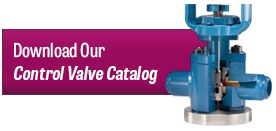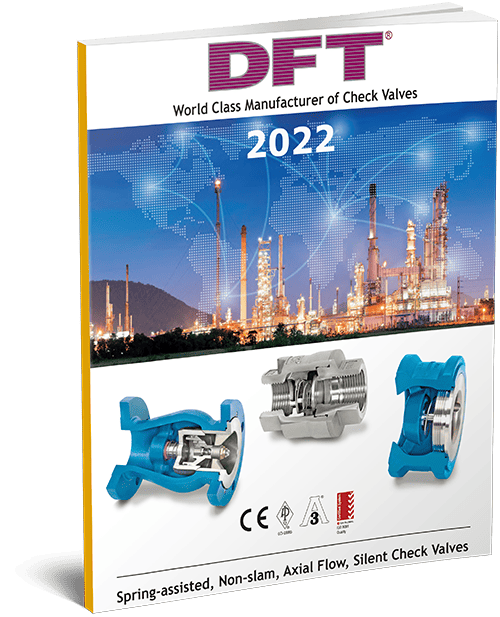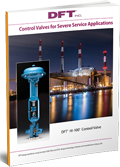How to Select the Right Control Valve
2 CommentsControl valves play a vital role in ensuring the efficiency of a fluid system. It is important to choose the one you use carefully. Otherwise, it may not operate or perform as expected, resulting in decreased process efficiency and/or system damage.
There are many factors to consider when selecting a control valve for a fluid system, such as versatility, flow control stability, connectivity, and maintenance requirements. Below, we highlight how these control elements work and what selection considerations to keep in mind.
How Does a Control Valve Work?
Control valves regulate the flow of fluid through a system by restricting or expanding the fluid passageway. This function alters the volume of fluid that passes through the system within a given time frame (i.e., the flow rate) and the pressure of the fluid.
A rising stem valve is one type of control valve. In this valve design, the valve stem raises and lowers the valve trim package to increase or decrease the size of the passageway, resulting in steady flow, increased flow, or decreased flow. This adjustment is made whenever the targeted process parameter is not at the right value.
Key Control Valve Selection Considerations
There are many types of control valves available, each of which can come in numerous designs, configurations, and sizes. This broad selection can make it difficult to choose which one is right for a given fluid system, but knowing what parameters are important can help facilitate the selection process. Some of the key control valve selection considerations include:
- Is the fluid a liquid, gas, or steam? Is it inert or reactive?
- Pressure rating. What are the standard and maximum pressure levels to which the valve will be exposed?
- Temperature rating. What are the standard and maximum temperature levels to which the valve will be exposed?
- Flow rate. What flow rate range should the valve be able to handle?
- What is the flow coefficient (Cv)—the flow rate (GPM) for a pressure drop of 1 PSI across the flow passage—for the system? This value affects the size of the control valve needed.
- Installation requirements. How should the system be configured? What are the piping size, upstream vs. downstream, and valve mounting requirements and restrictions?
- Design. What type of valve is required? A straight through venturi, or globe valve? A standard service, medium service, or a severe service valve?
- Industry/country standards. What industry and country standards are applicable? Key standards include American Petroleum Institute (API), American Society of Mechanical Engineers (ASME), Canadian Registration Number (CRN), and Pressure Equipment Directive (PED).
Quality Control Valves From DFT®
For control valves you can trust in your most critical fluid system applications, turn to the experts at DFT®! We are a premier manufacturer of check and control valves. Our control valve selection includes:
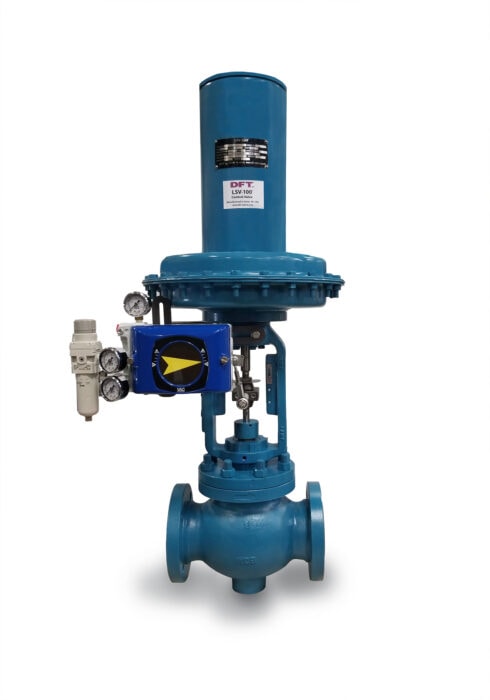
- HI-100®. HI-100® valves are severe service control valves with an in-line straight-thru venturi design. They are designed for use in harsh operating conditions, demonstrating smooth operation in high or low temperatures and/or with process fluids carrying suspended particles (e.g., slurries). They also have quick-change trim that allows for in-line replacement, interchangeable upstream and downstream seats, and wear bushings to extend service life and reduce operating costs.
- Ultra-Trol®. Ultra-Trol® valves are abrasive service control valves that are designed for use in erosive flow systems requiring flanged end connections. Similar to the HI-100® line, they have an in-line through ported venturi flow shape and a contained spherical ball, which help ensure smooth and efficient operation in high or low temperatures and with slurries.
- MSV-100®. MSV-100® valves are medium service control valves that are designed for use in flanged applications where bench repairs are common. They have a similar seat and internal design to HI-100® valves. They are suitable for on/off service or modulating control applications involving gas, liquid, or steam systems.
- LSV-100®. LSV-100® valves are economical Globe Style control valves designed for flanged applications. They have trims that can be replaced in the field through the bonnet. Suitable applications include on/off service and modulating control of gas, liquid, or steam systems.
For information about how to select the right control valve, contact us today. To learn more about our valve products, check out our catalog or request a quote.


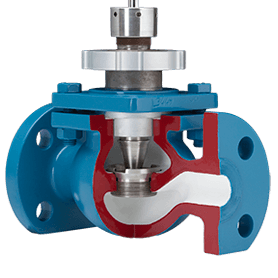
 “Bad information” comes in many forms. Original design specs might be difficult to obtain, and having those specs does not guarantee success. Occasionally, specs aren’t properly updated. Information that was good at first can fail to incorporate changes in process conditions. If the actual pressure, temperature, flow-rates or the media is different than that which was used to select the valve, it may fail or fail to work properly.
“Bad information” comes in many forms. Original design specs might be difficult to obtain, and having those specs does not guarantee success. Occasionally, specs aren’t properly updated. Information that was good at first can fail to incorporate changes in process conditions. If the actual pressure, temperature, flow-rates or the media is different than that which was used to select the valve, it may fail or fail to work properly.

